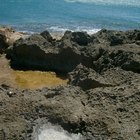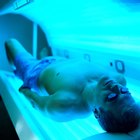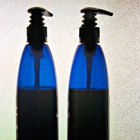
Hot tubs are a common amenity installed in hotels, fitness facilities, and athletic training rooms. One of the oldest forms of heat therapy, hot tubs have been used for recreational and restorative purposes since the Roman Empire. While most people are familiar with hot tubs using chlorinated or bath water, salt water hot tubs have some unique and beneficial characteristics.
Natural Water Sanitation
Salt water has a natural sanitizing effect that fresh water does not. The sanitizing effect of salt means that a salt water hot tub needs less chlorine for disinfection than a fresh water tub. Less chlorine means fewer irritations to the skin and eyes. With fewer chemicals, a salt water hot tub also has a more natural smell.
Reduced Swelling
The combination of heat and salt water can be an effective way to treat swelling and edema, notes the National Strength and Conditioning Association. The hot water opens pores, while the salty water draws fluid out of the skin. Salt water hot tubs can be used to reduce painful swelling from overexertion and exercise.
Tension Relief
Salt water hot tubs, especially ones with whirlpool capabilities, can be used to release both physical and psychological tension. Hot water helps relieve muscle tightness, while the water jets can massage and further loosen muscles. While hot tubs are often used by athletes for their restorative effect on muscles, everyone can use them for relaxation.
Healthy Skin
One of the disadvantages of heavily chlorinated fresh water hot tubs is their drying effect on skin. Salt water, by contrast, has a softening effect on skin. Salt is a common ingredient in many skincare products.
Joint Pain Relief
According to the Arthritis Foundation, heat therapy methods like hot tubs can be used to relieve joint pain. In addition to the pain relief from the heat, the water provides an almost weightless environment that relieves stress and pressure on joints.
Related Articles

Sea Salt in Hot Tubs

Is It Better to Wash Your Face With Hot ...

How to Gargle With Sea Salt

Reverse Osmosis Purifier Vs. Ionization

Health Benefits of Hot Peppers

What Are the Benefits of Tea Tree Soap?

Benefits of Sea Salt Glow Body Treatment

Benefits of Shea Butter and Coconut Oil ...

How to Remove the Smell of Cologne From ...

Difference Between Rock Salt and Sea ...

Heat Rash and Hot Yoga

How to Soak Your Feet in Mouthwash

What Is a Hydration Station Tanning Bed?

How to Remove Acne Scars With Water

Will Cream of Tartar Whiten Teeth?

List of Pore Clogging Ingredients

Skin Problems Caused by Swimming Pool ...

Least Acidic & Safest Chemical Hair ...

The Purpose of a Heat Exchanger

Dangers of Salt Table Lamps
References
- "Essentials of Strength Training and Conditioning - 3rd Edition"; National Strength and Conditioning Association; 2008
- "ACE Personal Trainer Manual: The Ultimate Resource for Fitness Professionals, 3rd Edition"; Cedric X. Bryant and Daniel J. Green; 2003
Writer Bio
Based in the Greater New York area, David Benjamin is a veteran of the fitness industry of over 15 years. He is coauthor of "The Business and Practice of Personal Training" and has lectured to countless fitness professionals. Benjamin holds a degree in physical education from the State University of New York, Cortland.
Photo Credits
goce risteski/iStock/Getty Images